Pride and Progress: Making Schools LGBT+ Inclusive Spaces

Written by Jo Brassington
Jo Brassington (they/them) is a former primary school teacher, the co-founder of Pride & Progress, and the co-author of Pride & Progress: Making Schools LGBT+ Inclusive Spaces. They work with schools, universities, and charities primarily around LGBT+ inclusion, trans awareness, and children's mental health.
‘Every person in a school community should be free to be them- selves, to feel seen, to feel safe, to feel supported, and to feel like they belong.’
–
For a moment – close your eyes – and picture a school.
What did you see?
Maybe you saw classrooms, or hallways, or uniforms you hated wearing as a kid.
Maybe you saw your favourite teacher, or your least favourite teacher, or perhaps you saw yourself standing at the front of class as the teacher. Maybe, like Jo, your mind immediately pictured the full-chorus cafeteria scene from High School Musical… or, maybe not.
It doesn’t matter exactly what you pictured – the point is that everybody reading this book has a picture. Every person holds an image in their mind of what schools look like, perhaps even what they feel like. Most of us hold with that image judgements of what we believe schools should look like.
Where does this picture come from?
Each of our images are individual, and they come from our own interactions with schools. All of us have experiences in these educational spaces, which have shaped our perceptions and understanding of them. This is one of the reasons that conversations about education are often so contentious, because every person has buy-in to the discussion. Perhaps your experience is from when you navigated school yourself as a young person, more recently as a parent, or as a person who works in a school every day. Perhaps, if you’re an educator like us, it feels like you never really left school.
–
Now, for another moment – close your eyes – and picture this time a school which is an LGBT+ inclusive space.
What do you see?
Please, take your time. Really try to imagine it. What would it look like for a school to be a diverse, equitable, and inclusive space for LGBT+ people? A safe space for all young people who occupy it, for their families, and for the adults who run it. Is the space you’re imagining now similar or different to the school you imagined earlier? Is it similar or different to the schools you experienced yourself as a young person? Is it similar or different to the schools you are helping to create now as an educator or parent?
Our guess is that you probably found the second school harder to imagine, right? You were all able to picture schools because of the reference points and direct experiences you have with them. But, when it comes to imagining an LGBT+ inclusive educational space, many of you won’t have these reference points, or direct experiences. This is because for most people reading this book, the system you were educated under was not LGBT+ inclusive. Whether you noticed it at the time or not, it’s likely your own education did not make space for LGBT+ people, or their stories. In fact, there was legislation in place to purposefully ensure that this community of people were not spoken about in schools.
So, when we asked you to imagine an inclusive school, what we were really asking was for you to reimagine. To take your experiences in a non-inclusive system and reimagine them. To take an educational history of silence and shame and reimagine it. To take your perceptions and ideas of what a school should look like and reimagine them for a better, more inclusive, future.
This reimagining is exactly what our new book aims to explore, and it all began in a tapas bar in Nottingham.
In the summer of 2020, as England emerged from the first of its COVID-19 lock- downs, the two of us sat together in the window of a tapas bar in Nottingham. It was during the period of time where we were all adjusting back to conversations in real life, and the realisation that people didn’t just exist from the shoulders up in a rectangle on zoom.
In fact, this was the first time we were meeting in person, although it felt as though we knew each other quite well. For a while we had been organising or hosting online events to discuss LGBT+ inclusive education with other teachers. Through the online events we had been involved in, and through Adam’s doctoral research at the time, we were beginning to hear incredible stories of educators who were quite powerfully reimagining their educational spaces to make them more inclusive. The difficulty was, as Jo put it that day over dinner, that these conversations were only ever heard by the few in attendance, and once these events were over, it felt like the conversations ended there.
We wanted a way to share these stories, to amplify these conversations, and to bring together the people who often felt like they were doing this work alone. It was over that dinner when Adam first floated the idea of a podcast. What if we recorded these conversations? What if we shared these stories? What if more people could hear about the amazing work these educators are doing to reimagine their schools? We both left that restaurant with these questions buzzing in our minds, until eventually, they became the bedrock of Pride & Progress.
When we launched the Pride & Progress podcast we did so with this statement:
‘For a while now, we have been organising events for LGBT+ educators and allies to discuss inclusive education. During these events, people shared powerful stories of pride, and of the progress being made in education. We want to share these stories, to amplify the voices of LGBT+ educators and cel- ebrate inclusion, progress, and the power of diversity.
We are living in a unique and pivotal moment for inclusive education. Now, for the first time ever, educators are strongly encouraged and enabled to make education, and our educational spaces, inclusive of LGBT+ lives. This requires a complete reimagining of what education could, and should, look like: an education that reflects the diverse society, allowing all people to see themselves and to feel they belong.
Join us as we amplify the voices of these LGBT+ educators and allies, share their stories of pride and progress, and celebrate the true power of diversity in education.’
–
Since sharing that statement, we have curated a collection of conversations and stories from people who are all, in their own way, reimagining educational spaces to make them more LGBT+ inclusive. We have spoken to teachers, leaders, trainees, charity workers, authors, actors, and activists.
Each conversation has helped us to learn, to unlearn, and to reimagine. In our new book, Pride & Progress: Making Schools LGBT+ Inclusive Spaces, we pull on each of those conversations, stories, and lessons to help you to begin to develop the reference points and experiences needed to yourself begin reimagining schools as LGBT+ inclusive spaces.
From hours of conversation, we have drawn together ten themes that we think are the keys to reimagining educational spaces. In each chapter we combine the lived experience of our podcast guests, with theory and research, to explore what each theme looks like in theory, in practice, and in action, to create an essential guide for educators who want to make their educational spaces more LGBT+ inclusive.
Ultimately, the book explores how we can reimagine our educational spaces to ensure that every person in them feels free to be themselves, feels seen, feels safe, feels supported, and feels like they belong.
Sounds good, right? You can grab your copy at a discounted rate during Pride Month on the Sage Website. Find out more here:
My Allyship Journey - Part 2

Written by Ben Hobbis
Teacher, Middle Leader and DSL. Founder of EdConnect and StepUpEd Networks.
ally (noun): a person or organisation that actively supports the rights of a minority or marginalised group without being a member of it.
allyship (noun): active support for the rights of a minority or marginalised group without being a member of it.
I’ve been an ally for all my adult life. However, it was only a few years ago I recognised this. Initially I realised I was an ally for women, or a #HeForShe.
The reason for recognising I was an ally for women (or sex equality/equity), was my previous experience. Working as a retail and Human Resources professional, I had been an ally for women. I’d worked with women who had been through pregnancies and were returning to work, women who had gone through a miscarriage, women who were working flexibly. I also worked within female heavy environments often with men who did not understand, empathise or appreciate what was happening around them. Hearing sexist comments and people laughing/ not challenging. I realised I didn’t like it. I realised it was wrong.
Upon joining education, I thought on entering a female heavy profession, surely there’s no gender inequalities here. Oh how wrong I was. I followed #WomenEd, I’d first known about them because one of the co-founders, Keziah Featherstone was one of my teachers. I then read more and more, I read blogs, I bought and read their blog, I attended virtual events and I even spoke at an event as a #HeForShe.
I then followed many of the other grassroots networks: BAMEed, LGBTed, DisabilityEd, Mindful Equity, Diverse Educators and many more. I continued to read, to educate myself, to try and understand the problem, whilst I knew I wasn’t living it myself. After reading, hearing people talk at online events, hearing their stories, often including stories of mistreatment, discrimination and inequity.
I then realised I was not just an ally for gender, but all protected characteristics, I was an inclusive ally.
I’ve learnt more and more about myself and my allyship journey, learning how I can become a better ally. This will be a lifelong journey for me.
Julie Kratz @NextPivotPoint refers to the term ally as an umbrella term. They state there are five key roles to being an ally: the mentor, the sponsor, the advocate, the coach, the challenger. I know I’m an advocate, but am I the mentor, sponsor, coach and challenger? I’m probably not as strong there, so that’s my challenge now, to continue to reflect on and develop my role as an ally in society. Therefore, I’m sharing my allyship goals:
- Challenge the usage of language.
- Coach and Mentor others to become allies.
- Advocate for equity by amplifying DEI through social media, my networks, and my day job.
- Sponsor and nurture diverse talent inside and outside of work.
To achieve this, I know I need to engage more with fellow allies and the networks I engage with, as well as those I am an ally to. Therefore, another goal is to attend an in-person event (or more than one) for a network I am an ally to. This will enable me to further develop and amplify as an ally.
As the world continues to evolve, so does my allyship.
AI: Ethics, Equity and Education

Written by Gemma Clare
Gemma is an experienced writer, specialising in education and child development. With a background as a former Inclusion Leader, Teacher, and SENCo, she is dedicated to sharing ideas that make a positive impact on the lives of children.
Maya sits down to do their homework. Instead of reaching for their textbooks, they turn to Artificial Intelligence (AI) to complete their research. Aiko sits down to assess their students. Instead of relying purely on their teacher-judgement and observation, he uses an AI-powered assessment tool.
AI provides an exciting opportunity for students and teachers to work in different ways and it’s becoming more established as a helpful tool in education. You can read numerous articles celebrating the benefits of AI for schools and colleges – as a tool for planning, assessment, personalised learning and more.
However, AI is presenting us with a new set of ethical issues. With concerns over bias, misinformation and unreliable sources, it’s become more important than ever for the education system to effectively teach pupils how to be critical of information.
The Bias Problem
Machine learning algorithms are only as unbiased as the data they are trained on, which means that they can perpetuate and even amplify biases in society. There are numerous examples of where AI bias has caused both small and large-scale discriminatory practices.
Take for example COMPAS, a tool used to predict whether criminals will re-offend, which wrongly predicted that black defendants were nearly twice as likely to do so as white defendants.
There’s also Tay, the Twitter bot from Microsoft that quickly became a sexist, racist and xenophobic holocaust denier after engaging with the public.
There are countless other examples, across healthcare, education, recruitment and more where machine-based bias has had a damaging effect on those with protected characteristics.
Think about how unchecked bias in AI technologies could impact the pupils in your school, and the wider influence this might have on society. For example, what would happen if an algorithm designed to predict student performance wrongly predicted that the black pupils in your class wouldn’t achieve as well as their white peers?
Misinformation
Another significant concern with AI is the prevalence of misinformation and false narratives. For example, despite scientific knowledge being used to train Galactica AI, ‘It spat out alarmingly plausible nonsense‘ such as incorrect summaries of research.
The increasingly popular ChatGPT-3 collates information from across the web, much of which is not factually accurate despite how assured it sounds in its delivery. It also seems to churn out multiple ‘sources’ which, when you look for them, simply don’t exist.
It’s now simple to create a very convincing narrative which is either partially or completely fabricated. This can be particularly problematic in the era of social media, where content can spread rapidly and without verification (either intentionally, or not).
Combine this with the flaws in bias and you can see how quickly AI can be at the forefront of disastrous consequences for equality and equity.
Take for example the case of ChatGPT-4 reinforcing sexist gender stereotypes when prompted to describe the education and career choices of a boy and a girl. In this example, the boy says “I don’t think I could handle all the creativity and emotion in the fine arts program.” and the girl replies that she can’t handle “all the technicalities and numbers in the engineering program”. Imagine your pupils using these tools to study and taking the answers as fact – reinforcing harmful narratives.
So, What Does This Mean for Educators?
You may be thinking, ‘these are problems for the developers of AI to solve, what have I got to do with this?’ and of course, developers need to be actively addressing these concerns. However, until every piece of AI technology is held accountable against rigorous ethical standards, these damaging flaws will remain, and we need to be aware of our own role within this.
Many of our pupils will be users of AI technology, both at home and in school. They’ll be accessing information and learning in a completely different way to previous generations. Educators play a vital role in preparing pupils for their future – and their future now includes AI technology.
As educators, we can empower our pupils to make informed decisions based on what they read and listen to. We have the opportunity to teach them to evaluate the credibility of sources and question information. Pupils can be explicitly taught to recognise and challenge biases when they encounter them and to understand the signs of unreliable sources, such as an over-reliance on anecdotal evidence.
Of course, teaching pupils to be critical of all information available to them is important, not just AI-generated content. With the prevalence of targeted advertising and propaganda circling the internet, it’s also important to teach pupils how to recognise the agendas of the content they encounter. This includes being able to identify political or commercial interests that may influence the information presented to them.
One way to achieve this is to teach pupils to identify language techniques, such as loaded language or euphemisms, that may reveal a hidden agenda. This can be particularly useful when analysing news articles or opinion pieces, where the author’s bias can be subtle but powerfully influential. By understanding how language can be used to manipulate readers, pupils can become more critical and discerning consumers of digital content.
This is an important conversation to be having in the education space right now. The ability to critically analyse the trustworthiness of content and separate fact from fiction is becoming an increasingly essential skill. If we’re not preparing the next generation of young people for this, we risk further aggregation of societal polarisation and inequality.
Educators have a unique opportunity and power to help young people to navigate the problems generated by new AI technology.
The next question is, are we adequately equipped to meet this challenge?
LGBT+ Inclusion for Catholics
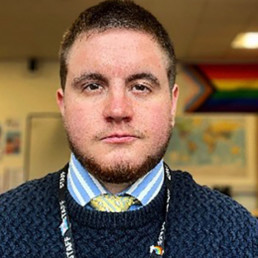
Written by George White
George White is an experienced teacher of RE and a Diversity & Inclusion Lead at a Catholic secondary school in Leicester. He holds a BA in Philosophy and Theology from Heythrop College, an MA in Global Ethics and Human Values from King’s College London and a Secondary PGCE in Religious Studies from the University of Cambridge. As an openly trans and Catholic educator, he has delivered conferences on LGBT+ Inclusion in Catholic Schools to the NEU as an LGBT+ rep for the East Midlands, Schools Inclusion Alliance, ASCL and more.
The official teaching of the Catholic Church, found in the Catechism, states that ‘[LGBT+ People] are to be accepted with sensitivity, compassion and respect. Any form of unjust discrimination in their regard should be avoided.’
One of the greatest privileges I have had in the last 12 months came from my role as one of the committee members at Quest, the charity aimed at LGBTI Catholics and their families providing pastoral support. In the summer term of last year, we hosted an online conference titled ‘LGBT+ Inclusion in Catholic Schools’ with Fr James Martin SJ who has always been a vocal advocate for the LGBT+ community despite the vast number of threats he receives online. In spite of that, he has received commendation from Pope Francis for his ministry towards LGBT+ Catholics when he said, ‘I pray for you and your work’ in a letter received in 2023 and prior to that Pope Francis thanked him for his ‘pastoral zeal and ability to be close to people with the closeness Jesus had’ in reference to his LGBT+ ministry. I was able to interview Father James Martin SJ in a conversation that lasted the best part of one hour and thirty minutes in which time he gave several helpful ways in which schools – and all Catholics – can be more inclusive of the LGBT+ community. I was set with my questions and after the interview has finished, I tried to process this into some simple tips that anyone might be able to take away from the session. I have settled on the following three, some of which have even been picked up by the Holy Father in the last few months.
Firstly, as Catholic educators and ministers, we are invited to listen to the stories and experiences of the LGBT+ community. In particular, we are invited to listen to the language that the community uses to describe ourselves and our stories. Pope Francis is the first Pope to say the word ‘gay’ instead of the outdated phrase in the catechism ‘homosexual’. When we listen to the stories of others, we are more easily enabled to accept with compassion, sensitivity and respect. Pope Francis encourages us to reach out to those on the peripheries – and very often – LGBT+ people can feel as though they are there. In the school resources provided by each diocese for Synod 21-23, pupils are asked the question, ‘who are the people who feel excluded and left out of the church?’ In my experience, lots of pupils labelled the LGBT+ community amongst others. From what we have seen of the synod responses, the contributions of LGBT+ people and women have been recorded, visibly – perhaps most obviously included for the first time in the history of the Church. I invite my fellow educators to recognise the language they are using in schools; use the preferred names of trans pupils, use ‘gay’ or ‘lesbian’ instead of ‘homosexual’ and invite LGBT+ Catholics to tell their story to pupils and staff. Reprint lanyard cards with pronouns and new photos for pupils who come out. Use LGBT+ people and symbols in marketing material. I was fortunate enough to be selected to be in a campaign for the Department for Education’s ‘Get into Teaching campaign where I spoke openly about being a transgender and Catholic teacher of Religious Education. These visible signs help pupils and staff who are LGBT+ to know that they are welcome and accepted, as church teaching says that we should be.
Secondly, there are many opportunities in the academic calendar that are fitting for both Catholics and the LGBT+ community. Fr James Martin SJ spoke about meeting young people where they are, accompanying them and celebrating their journey in life with them. For example, he has written that Catholics can absolutely celebrate Pride month, providing the focus is on human dignity. There are many ways to celebrate and/or remember the LGBT+ community throughout the year. For example, in my own diocese, we hosted a mass with the intention of remembering ‘Transgender Day of Remembrance’ on November 20th. This is a day where we remember those who have lost their life due to their transgender identity; whether by murder or suicide. We pray for the souls of the departed and also pray for an end to the persecution that they may have faced which led to their death. We wrote bidding prayers with this in mind and came together to remember this event with trans people and allies in our community. In addition, you may choose to look at material that goes out in February which is LGBT+ History Month. We wrote prayers for our morning registration in which we included the scripture from Psalm 139, ‘I praise you for I am fearfully and wonderfully made’ and we invited the school to come together for an end to LGBT+ persecution around the world. This kind of education helps us to prevent discrimination which might be directed towards the LGBT+ community especially from a religious perspective.
Finally, and perhaps the most obvious way to help contribute to the avoidance of persecution, we are called to stand up for the legal rights of our LGBT+ communities and relationships around the world. Pope Francis recently publicly spoke about the great injustice in several countries in the world who give a prison sentence or death penalty to those who are LGBT+. Prior to this, the Pope has advocated for legal same sex unions saying that LGBT+ couples have a right to be protected as families. This is perhaps a little harder for us to easily translate into life at school but not impossible. For a start, we can use clips of Pope Francis talking about these things to educate pupils on the realities of the world and what this means for LGBT+ people. We can also use it to guides our policy writing. As published by the Catholic Education Service in 2018 ‘Made in God’s Image’ we should deal with homophobic, biphobic and transphobic bullying the same way we do other discriminatory bullying. Our policies should clearly state that these types of behaviours will be treated in the same way as racism, sexism and other forms of discrimination. If we do not treat homophobic, biphobic and transphobic bullying in the same way, then we are guilty of breaking the law. Policies (such as those around uniform/make up and behaviour) should be gender neutral so that they apply to all students fairly.
The conversations I have had around LGBT+ Inclusion have led more generally to a review of the way in which we talk about diversity, equality and inclusion for all in our school. We host two ‘Diversity and Inclusion’ weeks a year where we have sessions from outside visitors as well as students sharing with their peers on things like race, faith, gender identity, sexual orientation, mental health, neurodiversity and the intersectional nature of lots of these characteristics. It has helped us to reassess the way in which we raise awareness to and celebrate our own diversity as a Catholic school community. We were commended in our recent Ofsted inspection as being an ‘inclusive’ school and we now have a dedicated staff and pupil group working towards our initiative to celebrate all human dignity in our community and ensure that everyone has a place – and more importantly a voice – at our table. We are guided by the principles of Catholic Social Teaching; solidarity, common good, participation and, of course, human dignity.
Reducing barriers to inclusion by casting a wide net
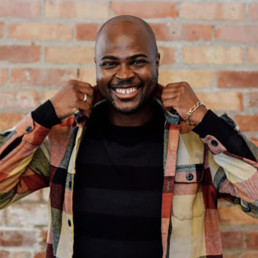
Written by Mahlon Evans-Sinclair
Mahlon Evans-Sinclair is an experienced educator with extensive participation in the fields of learning, professional & personal development, and EDI (Equity, Diversity and Inclusion).
Recently, I updated some guidance on the ‘use of pronouns’ as part of a wider report writing set of guidelines.
From the outset, I’ll say that I didn’t like the singular focus being placed on pronouns. Given that it’s an agitator for many, it felt like it was getting in the way of a wider message about how to write for a document that’s official in nature, but also personal in content. Additionally, the wording gave off a ‘need to know’ basis about any change/accommodation needed for the child in this regard. The twin issues for me in this are that (1) at a school-wide level, it requires the ‘push for assistance’ button to be pressed before ‘support’ can be given and (2) it can lead to a reactive ‘when prompted to’ attitude from teaching staff, with relation to promoting good practice of inclusion as default across the board.
So I changed the wording from a focus on pronouns to a wider acknowledgement to ‘Inclusive Language’ and in doing so, I added the following points:
- Inclusive language is affirming of all students, regardless of identity marker. (It reduces anxiety and barriers associated with identity presentation and supports feeling respected, understood and represented).
- [With regards to gender] Use of gendered terms are perfectly appropriate in many contexts (such as report writing) and don’t need to be consistently avoided, however consideration to use inclusive terms is encouraged across all interactions with students.
- Where a request has been made by both student and parent/guardian to use only the student’s name or [different] pronoun, [this will be communicated] directly.
In updating the guidance, there were a few things I wanted to contextualise, so separate from the document I gave further framing:
- Firstly, we should be working to reduce any barrier of inclusion related to accessing the feeling of being part of/belonging in a space.
- Thinking about it from the famously used and adapted ‘equality/equity’ image, we should be working to remove the fence completely (inclusion/liberation), rather than suggesting that we will treat everyone equally unless there has been a request made by the person facing the greatest barrier for an equitable ‘accommodation’.
- Furthermore, it’s understood that it’s not the responsibility of the person facing the oppression to educate others about it, so if we were to take that into account in this case, being inclusive in our language from the start takes the burden off of students having to ‘out’ themselves in highly visible and potentially unsafe way to feel validated in their identity.
- Finally, (in this case), moving the conversation away from being specifically on gender and reactive in its nature, we have the opportunity to move it to being about being ‘Intentional, Individual and Inclusive’ that both affirms the purpose of the space as well as those who are part of it.
Census Results Reaffirm the Importance of the New Vision for Religious Education
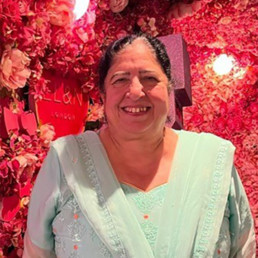
Written by Bushra Nasir CBE DL BSc (Hons.)
Mrs. Bushra Nasir is currently Chief Executive Officer (CEO) of the Drapers’ Multi- academy Trust (MAT) comprising of 5 schools in London. She line manages the Headteacher of each school and the MAT Executive team. All the schools are now judged at least Good by OFSTED and provide great opportunities for social mobility in an area of high deprivation.
Have you ever been asked about the meaning of life in the classroom? What about the origins of the universe or beliefs about what happens when we die? If you have then you have the same experience as the seven in ten parents who talk about these topics at home with their child. This was the finding from a new survey by Culham St Gabriel’s Trust, which found religion and philosophy was a hot topic at home. It’s unsurprising then that a majority of parents – almost seven in ten, saw value in the religious and worldviews approach to religious education.
Though the Census reveals that traditional religious affiliation is declining, society isn’t necessarily becoming less religious. Many people still engage with these questions because they are at the heart of what it is to be human. Societies have pondered these questions for thousands of years – and it is our privilege as teachers to continue this tradition and help the next generation explore both religious and non-religious responses to them. The reality is that everyone has a worldview. It is our unique way of understanding, experiencing and responding to the world around us.
The Census results have emboldened the renewed focus amongst educators on how we teach religion and belief in the classroom. Many of these conversations have been informed by the thinking behind the 2018 Commission on RE report that recommended both religious and non-religious perspectives be taught through a worldviews approach. What the Commission recommends is that the worldviews approach becomes the lens through which these ideas are taught.
What does this mean? To have a worldview is to appreciate the lived experience of religion or belief, and also that this may change over time. A worldview is a way of appreciating the pluralistic and diverse nature of belief in modern Britain. People’s worldviews may be made up of both religious and non-religious ideas. For example, ideas about how people should behave may be rooted in a religious belief, but may also have a moral or ethical perspective.
Research done by the think tank Theos prior to the Census confirmed this understanding of belief. It found that about half (51%) of those who identify as non-religious said they do not believe in God. Whilst the number of atheists is significant in its own right, we should not take ticking ‘non-religious’, in a census survey to imply people do not engage with some of the fundamental issues encountered in both religious and non-religious worldviews. They do so, but increasingly outside of a traditional religious affiliation.
A religion and worldview curriculum is about engaging with this idea in the classroom. Since the 2018 Commission on RE report, many schools have started to adopt these principles into their curriculum. I’ve witnessed first-hand the advantages. Students find that they have more of a chance to express themselves as well as engaging meaningfully with events they may already be reading about on their phones or in the news outside of school. RE teachers report finding the approach more academic, and a better use of their specialism. Meanwhile, senior school leaders such as myself appreciate the way this academic and knowledge-rich approach to the subject is consolidated and complements learning in English and humanities subjects.
What should I do if my school isn’t teaching a religion and worldviews curriculum? There are a number of very useful resources which teachers can access through the National Association of Teachers of RE website, to bring the curriculum to their students. However, as someone who is a Champion for RE in schools, I am familiar with some of the poor statistics around the teaching of the subject. More often than not, it’s up to us as senior leaders to ensure there is space for the subject on the timetable. Teaching RE to all pupils is a statutory requirement, and a number of schools ignore this by offering a tokenistic version of the subject. This does young people a disservice and denies them their entitlement to the high quality education in religion and worldviews that they need for life in the modern world.
At a recent debate in Parliament, I was struck by the number of politicians of all parties who made this precise point. Not only can high-quality RE play a role in helping young people get to grips with their worldview, it is also an important part of developing them as young citizens in modern Britain. MPs praised the subject’s ability to provide young people with skills of critical thinking, debating and empathy for the viewpoints of others as well as an appreciation that beyond Britain, the vast majority of the world still follows one of the major religious traditions. This is the type of young person we want to see leaving our school system – ready for modern Britain and the world beyond.
Returning to school in 2023, I look forward to the ongoing conversations students are having in their RE lessons about the changing nature of faith and belief in modern Britain. Of course, the subject of the Census has already come up in many RE lessons, and listening to students reflect on what the results mean suggests they are already getting to grips with their own worldview. Indeed, since these discussions, many have become more curious about the place of religion and belief in our society, and it has prompted them to question and explore their own worldviews, as well as those of their peers. RE lessons are contributing to a more positive, curious and intellectually stimulating environment in many schools. I’d like to see every student in every school experience that.
Stargazing: a Data Story
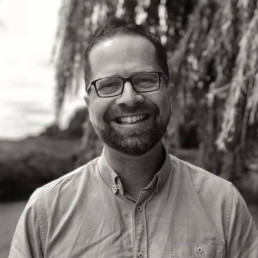
Written by Matthew Savage
Former international school Principal, proud father of two transgender adult children, Associate Consultant with LSC Education, and founder of #themonalisaeffect.
“If you wanna do data science, learn how it is a technical, cultural, economic, and social discipline that has the ability to consolidate and rearrange societal power structures.”
(Hugo Bowne-Anderson, Data Science Anthropologist)
“…saying so to some
Means nothing; others it leaves
Nothing to be said.”
(‘Nothing to be Said’ by Philip Larkin)
When my friends and family ask me what I do, and I say that I help schools worldwide use data more effectively, their response reminds me of Larkin’s poem. Because data is cold and remote, right? And a world away from the purpose of education. In fact, many an educator fears data, and rightly so, as the stick with which they have been, or might be, beaten, in the name of accountability.
However, for me, data, and assessment, are a moral and a revolutionary act. Data and assessment are, if you like, the Great Leveller.
Since being introduced to the worlds of ‘warm’ and ‘street’ data, the sometimes messy tangle of my thoughts about assessment have been woven together as an ensign for equity and justice.
As school leaders, if do not ask ourselves, as Norah Bateson would do, “But what is the warm data on this”, if we allow ourselves to take any piece of data out of context, to pluck it, cold, from the ecosystem on which it depends, and which depends on it, we are compounding “already wicked problems”.
And if we do not “pound the pavement”, and intentionally seek the authentic stories of those students, and groups, currently residing on the margins of successful learning and positive wellbeing in our community then, again, as Freire would say, this is a violence which “dehumanizes the oppressed”.
However, if we take all the jigsaw pieces of data at our disposal, and we carefully put them together, something amazing, and revolutionary can happen. A wise ‘data storyteller’ with whom I have the privilege to work explained to me that, for her, data in our schools is a galaxy. We need to seek out even the faintest stars, and join them together into constellations; each constellation will help us read the story of the marginalised students in our care, and render our schools more equitable and just as a result.
So the next time I am asked what I do, I will say that I am a stargazer. And that will be enough.
References:
- Warm Data Lab. Available at: https://warmdatalab.net/warm-data (Accessed: January 2, 2023).
- Safir, S. and Dugan, J. Street Data: A next generation model for equity, pedagogy, and school transformation. Corwin, Thousand Oaks, CA, 2021
- Freire, Paolo. Pedagogy of the Oppressed: 30th Anniversary Edition, Bloomsbury Publishing USA, 2014
Opportunities
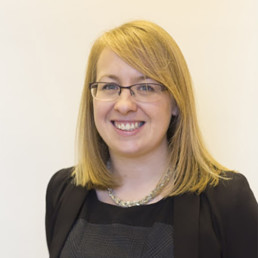
Written by Lindsay Patience
Lindsay Patience is the co-founder of Flexible Teacher Talent. She is a Teach First Ambassador, a School Leader and a mother.
Opportunities are usually so exciting and positive, but they can also be a cause of frustration and worry.
Sometimes when an opportunity comes along we ask ourselves: Can I do this? Should I do this? Is this the right thing for me at this time? Are the risks too great? Is this what I want?
I’m usually very much of the mindset that opportunities should be grasped with both hands, we should be 10% braver as #WomenEd say. I think it’s important to take opportunities when they arise to develop myself, to show others it can be done, to make progress, to drive change. Sometimes I feel privileged to have access to opportunities and sometimes I feel I’ve worked really hard to get to them, sometimes I have both of these feelings concurrently. I feel a certain sense of duty to embrace opportunities for myself, for others women, for my children. To show that I can do it, they can do it, we can do it.
I’ve recently been faced with a situation where I have a huge professional opportunity, it is everything I could have hoped for, almost unbelievably so. But it has come at a really bad time for me. I’ve just had my third child, a much hoped for and loved rainbow baby after a sad loss the year before. How I work in the next year or two may need to be substantially different and I’m just not sure I have the capacity to take on the new opportunity that I’ve worked hard to secure. What a waste! What frustrating timing! If it was all just six months or a year later! But it isn’t – it’s now.
So I’ve come to the conclusion that saying no to opportunities can be brave too. It can show others healthy boundary setting and set a good example as a role model. I’m prioritising different things at the moment. It wasn’t the right time but I can make an impact in other ways, there are other paths that I can take later on when I’m ready, when the timing is better. It feels hard to make that decision, it seems both selfish and self destructive in a very confusing way.
I think we often say no to opportunities because of imposter syndrome or to comply with gender norms or because the system prevents us from making genuine choices. Because of this there is a guilt and a fear of saying no to opportunities. We must push ourselves, feel grateful for the opportunity, be a role model and a trail blazer. But sometimes the best thing for you, your personal choice in your unique set of circumstances is to say no to the opportunity. Not to grasp it but to let it pass, maybe delay it, maybe give it up forever. Sometimes that is the best thing to do and the right thing to do. But this can feel wasteful, ungrateful, shrouded in guilt and potential regret. It can lead to resentment and anger where the decision is forced by circumstances. There’s also an undercurrent here of unfairness – I’m in this position because I’m a mother, are fathers facing these same missed opportunities? That pressure and guilt I feel about the opportunity, is that largely because of my position as a woman and a mother? As with so many things, when intersectionality is considered there is likely even more pressure to “be what you can’t see”, to take the opportunities because they may not come again, to want to get the rewards you’ve worked so hard for.
Sometimes it’s ok to let an opportunity pass. They say when one door closes, another one opens – even if you are the one to close the door yourself this is still the case. I will have to be brave enough to trust that there will be other opportunities at the right time for me.
But what do we need to change so that people can truly make choices about opportunities that present themselves? Greater flexibility in how we work? Greater flexibility on timing for starting jobs/projects? Better childcare options? Changes to societal norms and pressure? More opportunities for those with protected characteristics? If we want the best people for the job then we need to think differently about the opportunities people have and how to support them in taking them.
How Well Do You Know Your Governance Professionals?
On International Women’s Day (8 March) 2023, GovernorHub, part of The Key Group, released a research report delving into the salaries and working patterns of 1,298 governance professionals working in schools and trusts.
It sheds light on the often-hidden roles of governance professionals, who this research reveals are indeed predominantly female, and explores how their salaries fare against those in comparable roles in other sectors.
See the key findings of the report below, and some recommended actions to help overcome pay disparities to support the recruitment and retention of talent in these important roles.
Key findings
The survey of 1,055 clerks, 100 governance co-ordinators and 143 governance leads found that:
- Around 90% of governance professional roles in schools and trusts are filled by women, making this one of the most female-dominated careers in the education sector and beyond
- The majority (85%) of clerks surveyed reported working part time – for governance co-ordinators it’s 49%, and for governance leads it’s 37% – which is far higher than the government’s national employment data at 23% of working-age people working part time in 2021
- Almost a third (30%) of all female governance professionals surveyed reported having taken a career break due to caring responsibilities, compared to 4% of male respondents
- Clerking roles in schools and trusts appear to have the largest salary discrepancies, with a median salary of £25,000 pro-rata, which is substantially lower than the median salary for equivalent roles in the local government (£33,782), public services (£33,636), and not-for-profit (£31,620) sectors
- Over half (54%) of clerks surveyed reported feeling ‘underpaid’ or ‘extremely underpaid’; comments from some respondents suggest this is often caused by needing to work more hours than are allocated to each task or meeting
- A lack of visibility and understanding of clerking roles, combined with their increasing complexity, might be contributing to the stagnation of pay felt by many clerks surveyed
A quote from one part time clerk respondent illustrates a lack of awareness, in some cases, of this role:
“Having worked for 10 years with the school, I had to ask for my salary to be reviewed a couple of years ago and the rate was upped. I checked my letter of appointment and it said my salary would be reviewed every year – I pointed this out, but it isn’t reviewed every year. I think my role falls through the cracks. As a part time employee, I don’t know if I am missing out on any other work benefits, pension etc., and whether I’m entitled to equipment to help me to do my job.”
Recommendations
To help improve working conditions for governance professionals and, in doing so, help recruit and retain valuable talent for the sector:
- Employers – should use annual appraisal meetings as an opportunity to review and benchmark pay, and follow government guidance on reducing your organisation’s gender pay gap
- Self-employed individuals – should negotiate hourly rates in line with benchmarked salaries, as well as hours assigned to each task
- Everyone working in governance professional roles – should set and share a working-time schedule to help improve work/life balance, and join a union, to help give them a voice and professional advice
Conclusion
GovernorHub’s research report gives governance professionals in schools and trusts the evidence to show what they’re worth, and to look to align their pay with equivalent roles in other sectors.
The report recommends that employers and individuals take action to overcome the pay disparities, and ensure that governance professionals are recognised and rewarded appropriately.
By taking these actions, the education sector can strengthen its workforce of governance professionals who play such a vital role in supporting our schools and trusts. Championing these key roles will only serve to support the best possible educational outcomes for our children and young people.


